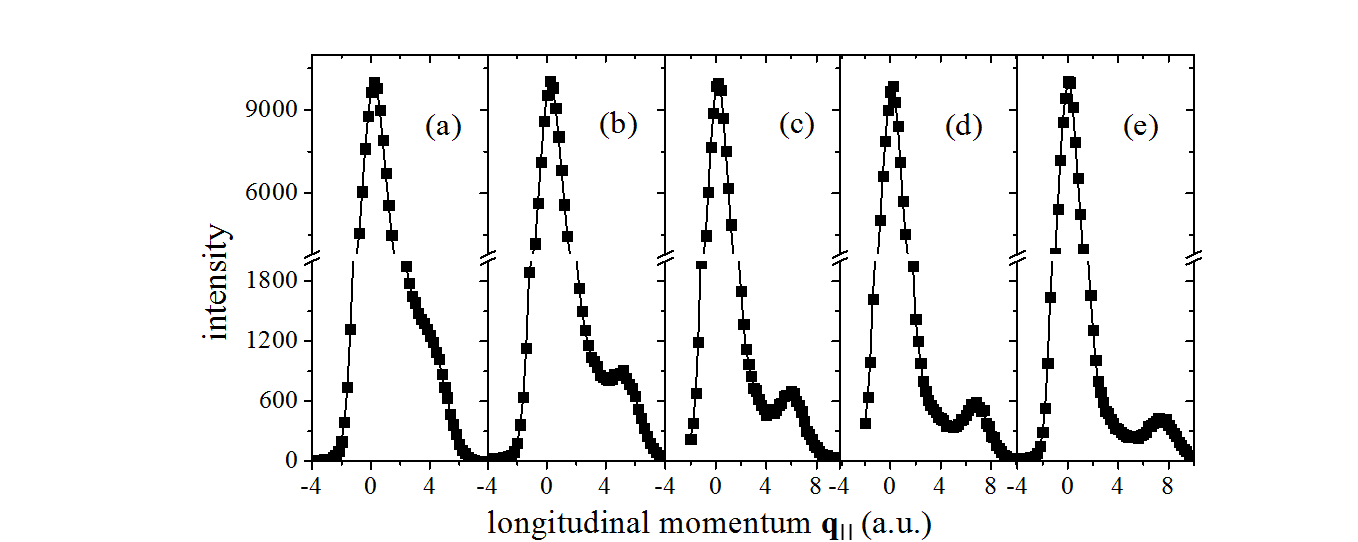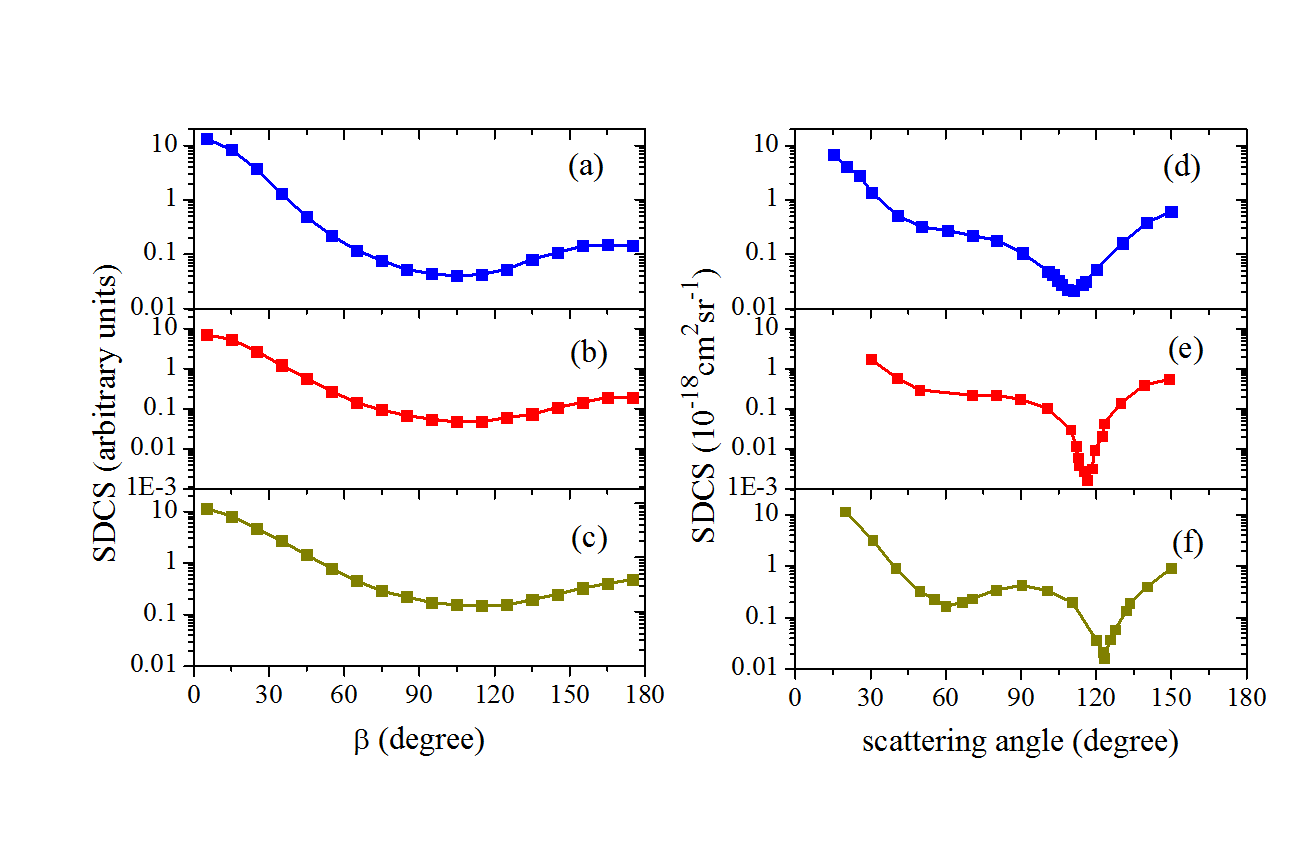Electron impact single ionization, i.e. (e, 2e) reactions, is an important tool for studying collision dynamics and the momentum distributions of bound target electrons. Most of the previous experimental and theoretical works focused on simple atomic targets such as H and He, and those measurements were carried out at very special observation geometries. In the present work, researchers in Institute of Modern Physics (IMP),CAS present an overview of the (e, 2e) dynamics independent of the observation geometries.
The momentum distributions of the recoil ions Ar+ in Ar (e, 2e) reactions were obtained at incident electron energies from 80 eV to 220 eV by using the reaction microscope (see figure 1). The contributions of large longitudinal momentum corresponding to large scattering angle are significant. By comparing the single differential cross sections of the Ar (e, 2e) with those of the electron-argon elastic scattering process, it is concluded that the elastic scattering between the incident electron and the target core plays an important role in the large angle ionization scattering process, and the additional phase shift introduced by the ionized electron results in the disappearance of the sharp minimum that was observed in the elastic scattering (see figure 2). In addition, at the incident energy of 180 eV, the relative contribution of the second maximum at large longitudinal momentum in Ar (e, 2e) reactions is smaller than that in Ne (e, 2e) reactions. This is qualitatively explained based on the total single ionization cross section and the impact parameters related to the effective potentials experienced by the incident electrons for argon and neon atoms respectively.
The results have been published in Journal of Physics B: At. Mol. Opt. Phys. 44 055202(2011). See also the related paper PHYSICAL REVIEW A 82, 052702 (2010).

Fig.1. Longitudinal momentum distributions of the recoil ions Ar+ (Image by Institute of Modern Physics).

Fig.2. Comparison of the singly differential cross section of Ar(e, 2e) reaction ( left column) and that of e-Ar elastic scattering (right column) (Image by Institute of Modern Physics).

